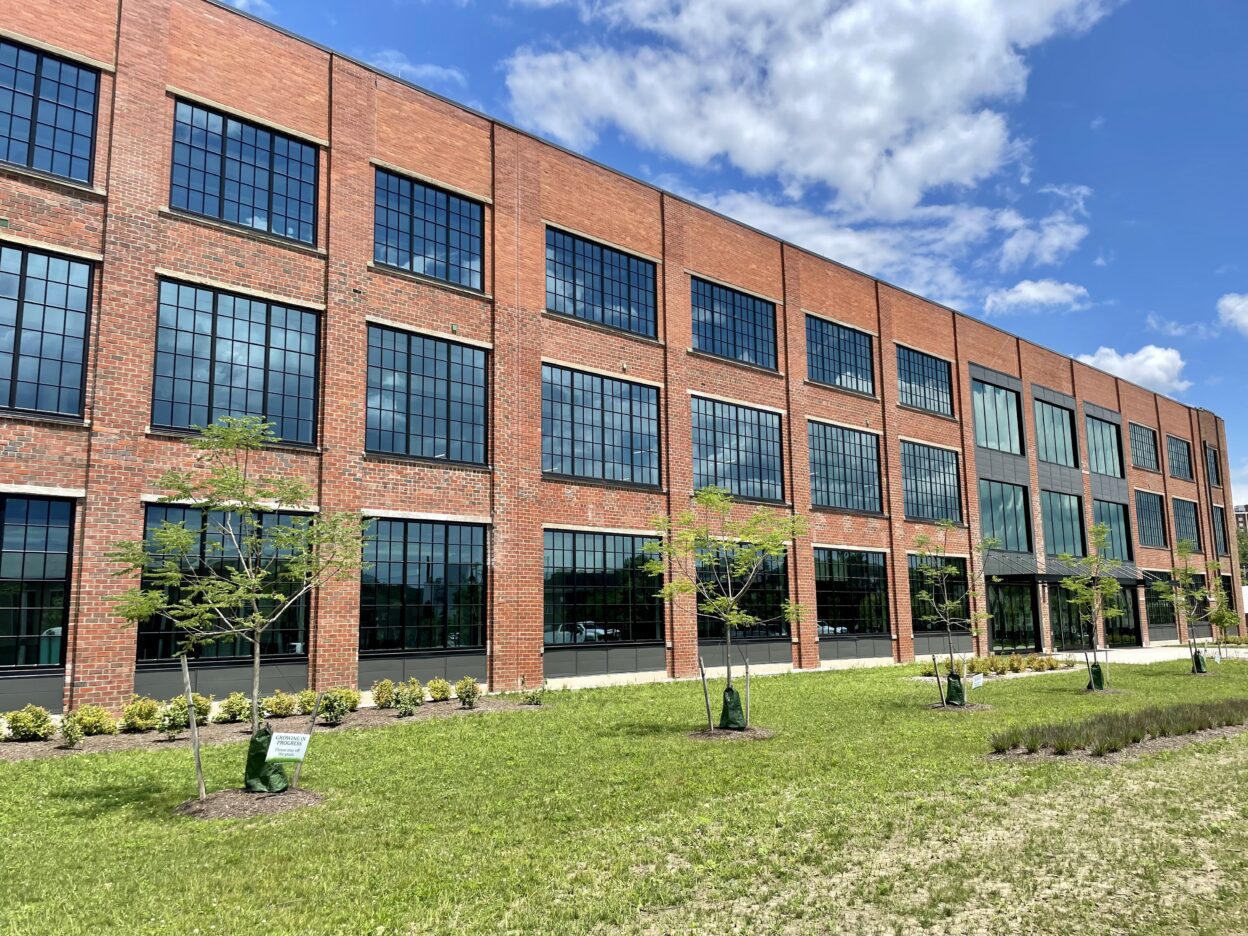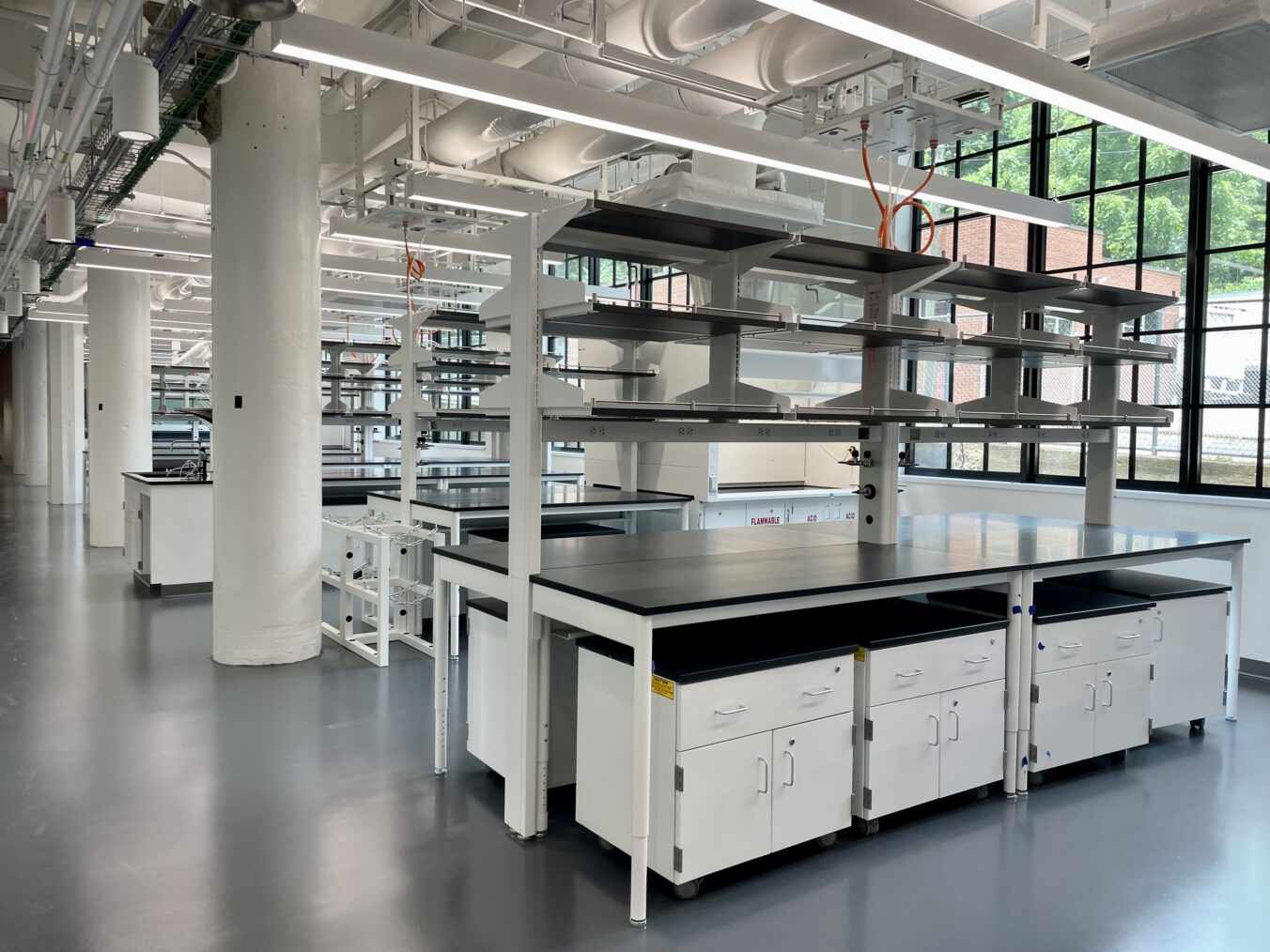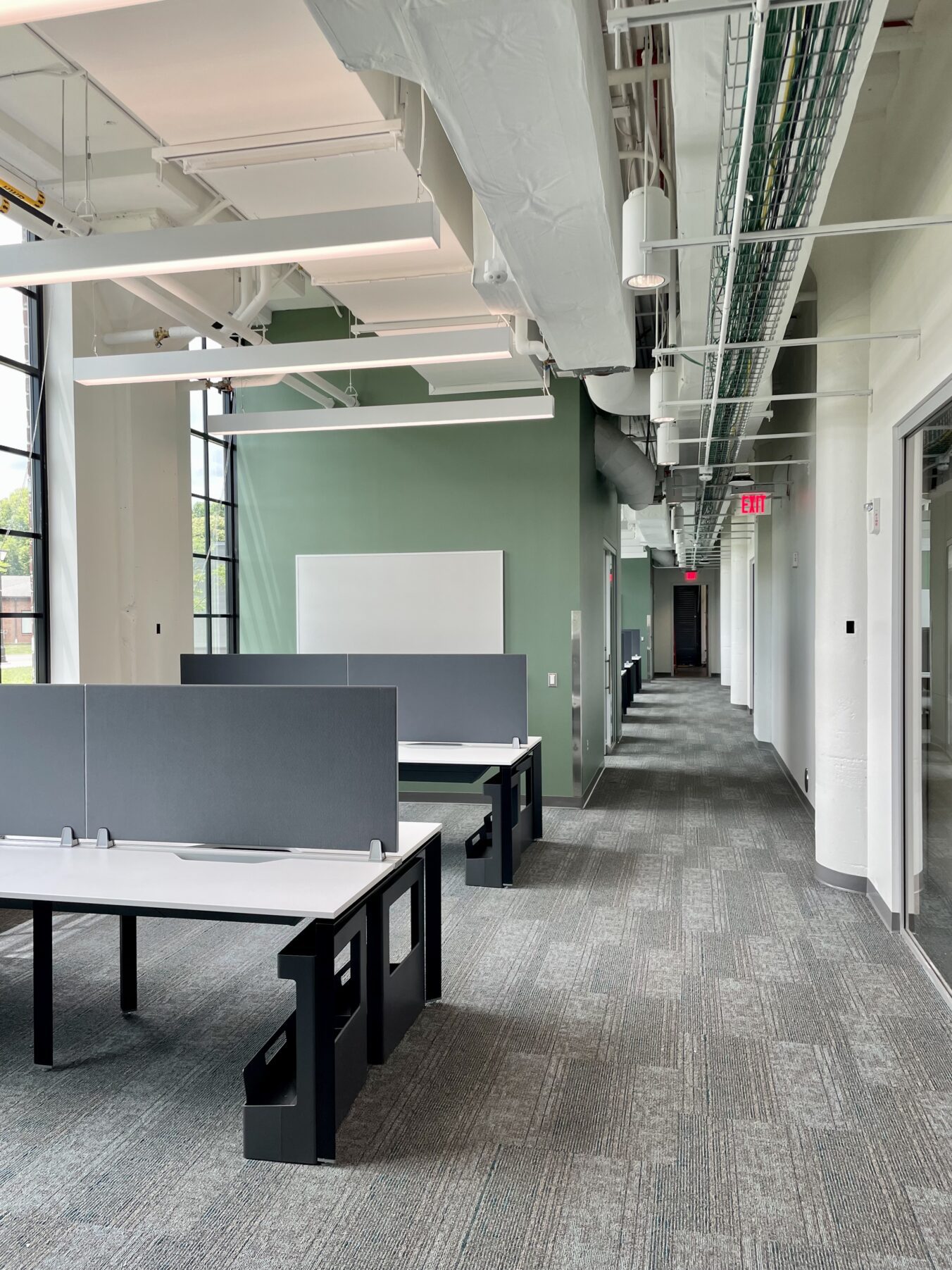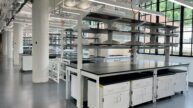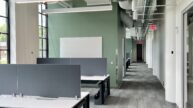In collaboration with Barton Malow, Ohio University’s Russ College of Engineering and Technology has embraced this spirit of progress through the recent transformation of the West Union Street Office Center into the cutting-edge Russ Research Opportunity Center. The revitalized space boasts a sleek and modern aesthetic, achieved through Barton Malow’s strategic adjustments to the building’s front, resulting in a more streamlined appearance.
The project encompassed a comprehensive overhaul of the existing space, involving the installation of new flooring, walls, ductwork, sprinkler systems, and HVAC infrastructure. The project team also oversaw the meticulous placement of laboratory equipment, including exhaust snorkels, to ensure the safe disposal of potentially hazardous chemicals.
This transformative project’s scope also included building new clean labs, wet chemistry labs, a solid oxide fuel testing lab, and multiple open lab areas. Clean rooms added on the second floor feature a seamless wall-to-floor system, an installation demanding expertise and precision to ensure long-term durability. Epoxy-coated floors and walls, along with epoxy tables and cutting boards in the lab spaces, provide students with a secure, easy-to-maintain, and aesthetically pleasing environment for their work and studies.
Barton Malow also led the creation of office spaces, workstations, and conference rooms that encourage interdisciplinary cooperation and open communication. These new meeting spaces create a place where students and staff can come together to solve complex problems, exchange ideas, and push the boundaries of what is possible.
The newly transformed space offers a dynamic environment that can be modified and reconfigured as research priorities shift. The university will benefit from having room to expand in this building, as half of the building is currently shell space that can accommodate diverse needs. This flexibility is invaluable in a world where technological advancements change at unprecedented speeds.
